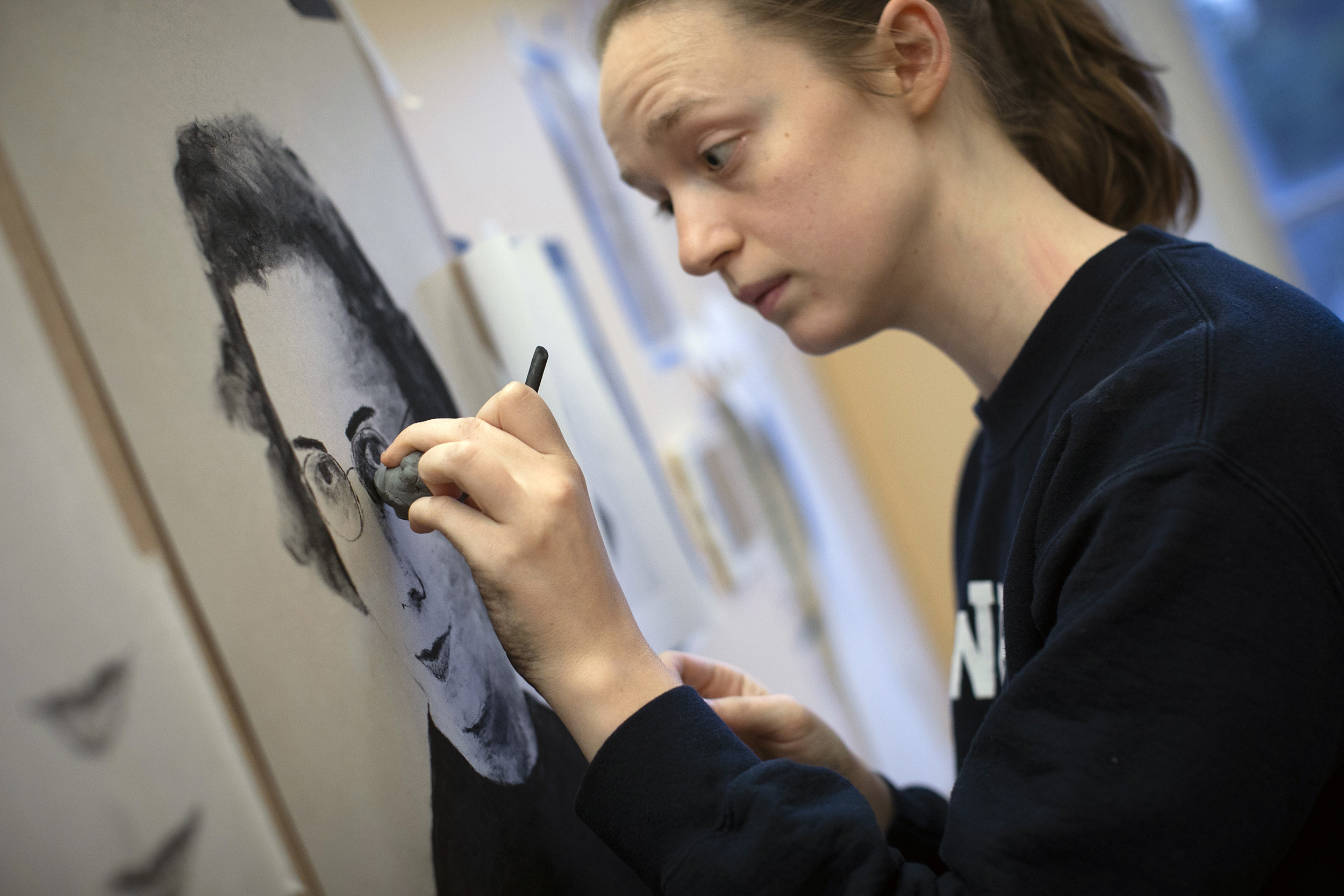Reading like a translator is an enlightening approach that allows readers to delve deeper into texts, unraveling layers of meaning that might otherwise go unnoticed. Renowned translator Damion Searls emphasizes that this method is not merely about the exchange of words from one language to another but about engaging with the essence of the literature itself. By employing various translation tips from his extensive experience, Searls guides aspiring translators in honing their skills to appreciate the intricate sentence structures and philosophical nuances present in any literary work. This reading strategy encourages individuals to embrace the spirit of the original text, fostering a more profound understanding of how to translate literature effectively. Ultimately, reading like a translator transforms one’s perspective, cultivating a deeper appreciation for the art of translation and the stories woven within different languages.
Approaching literature through the lens of a translator involves immersing oneself in the text with a heightened sense of engagement and analysis. This practice, often referred to as interpretative reading, encourages readers to unpack the layers of narrative and linguistic nuances that define a piece of writing. By adopting this mindset, one can develop essential skills that are pivotal not just in translation but in comprehending the philosophical principles that govern literary works. Engaging with a text as a translator opens the door to a richer reading experience, enabling individuals to discover how to translate literature beyond mere words. Through this alternative approach, readers become more adept at recognizing the seemingly invisible threads that connect language and meaning across cultures.
Understanding the Philosophy of Translation
Translation is not merely about substituting words from one language to another; it is a deep understanding and engagement with the text. According to Damion Searls, the process embodies the philosophical aspect of what translation truly represents. Drawing on the ideas of Maurice Merleau-Ponty, Searls argues that translators create a unique bond with the text, allowing them to perceive not just the literal meaning, but the underlying emotions and cultural context embedded within the original language. Hence, the philosophy of translation encourages translators to immerse themselves in the nuances of both languages, ultimately resulting in a richer and more authentic rendition.
Moreover, Searls emphasizes that this philosophy requires translators to recognize the intentionality behind an author’s choices. By understanding why certain phrases are structured a particular way, translators are equipped to reflect the original’s voice while crafting a version that resonates with English-speaking audiences. This transformative approach underscores the depth of translation, highlighting the necessity for translators to possess both linguistic proficiency and a philosophical sensitivity to the text’s original intention.
Tips for Reading Like a Translator
To read like a translator, one must adopt a meticulous approach that prioritizes a deep engagement with the text. Damion Searls points out that effective translators do not merely skim through passages; instead, they conduct a close reading of the language’s structure. This means paying attention to stylistic nuances and the unique characteristics of the source language and how they contribute to the work as a whole. For aspiring translators, this skill is crucial, as it dictates how accurately they can convey the essence of the original work in their translations.
Additionally, Searls suggests that aspiring translators practice by comparing translations and original texts side by side. This exercise not only helps in recognizing various translation styles but also enriches their understanding of how differing structures can affect meaning. Engaging in such practices allows readers to develop their own translation instincts, which can lead to a more intuitive approach when they eventually begin translating pieces themselves.
The Role of Intuition in Translation
Intuition plays a significant role in the translation process, as highlighted by Damion Searls’ approach to his work. He describes the importance of trusting one’s instincts during translation, allowing for a flow in the text while still being faithful to the original meaning. This intuition often comes from the translator’s deep reading and comprehension of the source material; it enables them to create a translation that feels natural in the target language.
However, Searls also cautions that intuition should be balanced with careful analysis. While reading like a translator, one must differentiate between instinctual responses and a thoughtful consideration of linguistic choices. Balancing these two elements can lead to more nuanced translations that not only convey meaning but also reflect the emotional undertones and subtleties of the original work, thereby enriching the reading experience for audiences.
Developing Translator Skills through Practice
To cultivate the skills necessary for effective translation, Searls advocates for consistent practice and engagement with various texts. Each translated work presents distinct challenges and learning opportunities, which can help budding translators refine their methods. Participating in workshops, like the ones Searls led with students, allows aspiring translators to receive feedback, learn from experienced peers, and further develop their craft. This practical experience can be invaluable in honing the analytical and creative skills required in translation.
Moreover, Searls notes that studying different genres of literature can enhance a translator’s versatility. By engaging with various styles, voices, and contexts, translators can expand their repertoire and techniques. This diversity can significantly enrich their translation practice, enabling them to adapt their skills to meet the demands of different literary forms, thus contributing to their growth as a translator.
The Influence of Cultural Context in Translation
Cultural context is paramount in translation, as highlighted in Searls’ discussion on linguistic choices and their meanings. Navigating cultural references and idioms requires a deep understanding of both the source and target cultures to ensure that the translation is not only accurate but also culturally resonant. A skilled translator must therefore engage with the cultural nuances that inform language use, which often involves extensive research and immersion in the source culture’s literature, traditions, and societal norms.
An example Searls provided illustrates the intricacies involved in translating specific cultural references. By understanding the connotations attached to terms within the source language, a translator can create a parallel in the target language that evokes similar images and feelings in the reader. This careful consideration of cultural contexts allows for translations that do not just convey words, but also embody the rich tapestry of meanings that those words hold within their original setting.
The Challenges of Literary Translation
Literary translation presents unique challenges, as demonstrated by Searls’ work on complex texts. Translators must navigate various layers of meaning, including themes, tone, and character voice, which require not only linguistic skills but also an artistic sensibility. This task is particularly challenging when dealing with culturally specific references that may have little to no direct equivalent in the target language, necessitating creative solutions that respect the original text’s integrity while ensuring readability.
Additionally, Searls speaks to the emotional weight that literary texts carry, emphasizing that translation must reflect the original’s emotional subtleties. To achieve this, translators often rely on their intuition and deep understanding of character and narrative. By translating with an awareness of these emotional currents, they aim to produce a result that allows readers from different cultures to share in the original’s emotional impact, thus retaining the literary essence while bridging cultural gaps.
Navigating Linguistic Differences
One of the most significant aspects of translation involves navigating the linguistic differences between source and target languages. Searls points out that awareness of these differences can greatly affect a translator’s ability to convey meaning effectively. Grammatical structures, word order, and even the sound of words can vary widely, and a skilled translator must recognize these elements to maintain the flow and clarity of the text.
Moreover, knowing which linguistic elements can be omitted or altered is crucial for creating a translation that reads smoothly in the target language. Searls’ example of translating Uwe Johnson’s work illustrates that understanding such nuances allows translators to honor the author’s style while making necessary adjustments for clarity. By mastering these linguistic differences, translators can produce work that resonates well with the target audience without losing the original message.
The Importance of Author Collaboration in Translation
Collaboration with authors can significantly influence the quality of a translation. Damion Searls notes that engaging directly with writers can unveil the intended meanings behind certain phrases and stylistic choices, allowing translators to create more authentic versions of the text. Author input can help clarify specific contexts or cultural references that may not be immediately obvious, which is invaluable in crafting a translation that respects the original while also being accessible to a new audience.
Through dialogue with authors, translators can achieve a greater understanding of the author’s intent and emotional tone, which can inform decision-making in translation. This collaboration ensures that the final product remains true to the original spirit of the text, ultimately enhancing the reading experience for consumers of translated literature.
Final Thoughts on Becoming a Better Translator
Finally, Searls’ reflections on becoming a competent translator highlight the importance of continued learning and humility within the field. He recognizes that translation is an ongoing process of growth; no translator ever truly finishes mastering their craft. Searls advocates for an approach that emphasizes embracing mistakes as critical learning experiences to develop deeper insights into both the art of translation and the languages involved.
In conclusion, aspiring translators should view their journey as a continuous process of exploration, practice, and engagement with both languages and cultures. By doing so, they can cultivate the sensitivity and skills necessary to translate effectively, producing work that expresses the richness of the original while connecting with readers in meaningful ways.
Frequently Asked Questions
What does it mean to read like a translator in the context of translation tips?
Reading like a translator involves deeply engaging with the text and understanding the structures and nuances of both the source and target languages. This process allows a translator to interpret the author’s intent effectively and choose words that convey the same meaning in a different linguistic context.
How can I improve my translator skills through reading like a translator?
To enhance your translator skills, practice reading texts in both the source and target languages with a focus on their structure, style, and subtleties. By analyzing how authors utilize language, you can better appreciate their choices, which will inform your own translations.
Why is reading like a translator important for understanding the philosophy of translation?
Reading like a translator is crucial because it allows you to unpack the layers of meaning within a text. According to Damion Searls, this approach enables translators to identify intentional stylistic choices made by authors, which is essential for delivering authentic and nuanced translations.
What strategies can I use when I want to learn how to translate literature?
To learn how to translate literature effectively, immerse yourself in both the source and target languages, read widely within different genres, and practice translating passages. Engage with translation workshops and seek feedback to refine your techniques while embodying the essence of reading like a translator.
How do translators balance fidelity to the original text and readability in their translations?
Translators balance fidelity and readability by maintaining the original text’s intent while ensuring that the translation flows naturally in the target language. This often requires making conscious choices about word choice and sentence structure, embodying the philosophy of translation discussed by experts like Damion Searls.
What role does personal interpretation play when reading like a translator?
Personal interpretation is a vital aspect of reading like a translator, as it allows the translator to engage with the text on a deeper level. Each translator’s unique perspective and understanding influence how they convey the author’s voice and intent in a new language.
How does Damion Searls suggest approaching literary translation?
Damion Searls suggests that approaching literary translation should involve a slow and precise first draft, allowing for revisions that focus less on the original text and more on crafting a version that sounds authentic in English. This method captures the essence of reading like a translator, emphasizing intuition and understanding.
What insights can be gained from the philosophy of translation shared by Damion Searls?
Damion Searls’ philosophy of translation highlights that translating is both a form of reading and writing. He emphasizes understanding how language functions and how cultural nuances shape meaning, guiding translators to produce more thoughtful and relevant translations that resonate with readers.
How can reading like a translator help in overcoming linguistic challenges?
Reading like a translator equips individuals with the skills to analyze and reinterpret challenging linguistic elements. By cultivating a deep understanding of both source and target languages, translators can find creative solutions to maintain the integrity of the original text while ensuring clarity for the target audience.
What is the significance of understanding structural elements in translation?
Understanding structural elements in translation is significant as it helps translators identify which components can be omitted or adjusted to suit the target language’s conventions. This knowledge is essential for maintaining the text’s original meaning while ensuring it feels natural to readers, reflecting the core philosophy of translation.
| Key Points | Details |
|---|---|
| Translation as a Reading Experience | Damion Searls emphasizes that translation is less about choosing words and more about responding to the text, akin to how readers envision characters. |
| Uniqueness of Translating | Translation blends reading and writing skills, but requires unique reading that recognizes linguistic structures. |
| Understanding Author’s Intent | Searls explains that translators must respect the author’s stylistic choices and not simplify the language. |
| Process of Translation | A slow and precise first draft is vital, allowing for intuitive revisions that prioritize the flow in English. |
| Maintaining Context | A successful translation keeps the associations intact for readers, avoiding disruptions in the narrative. |
| Expertise and Nuance in Translation | While mastery of the source language is important, different backgrounds can contribute to translation in varied ways. |
Summary
Reading like a translator involves a nuanced understanding of both source and target languages, a skill highlighted in Damion Searls’ insights on translation. Searls discusses the intricate relationship between reading and translating, emphasizing that effective translation is about capturing the author’s intent while adapting the text for an English-speaking audience. He highlights that every translation is a unique interpretation shaped by linguistic structures and cultural contexts, making it essential for translators to engage deeply with both languages. Ultimately, Searls’ approach illustrates that translation is not merely a linguistic exercise, but a creative process that requires intuition and a profound respect for the original text.




